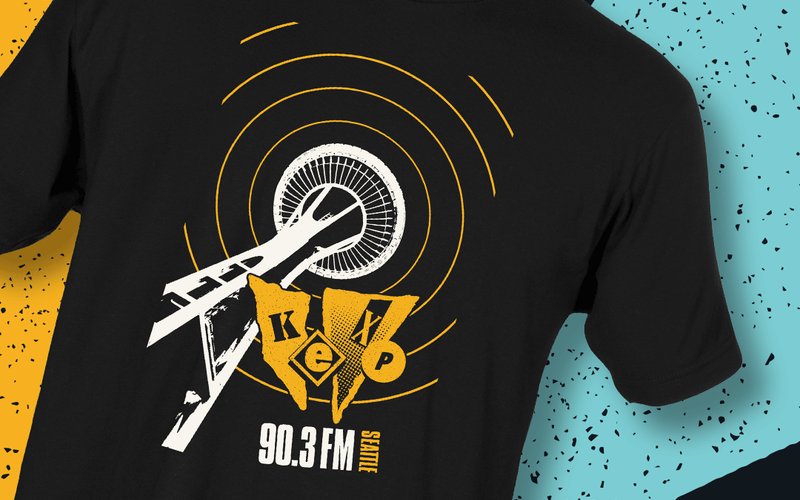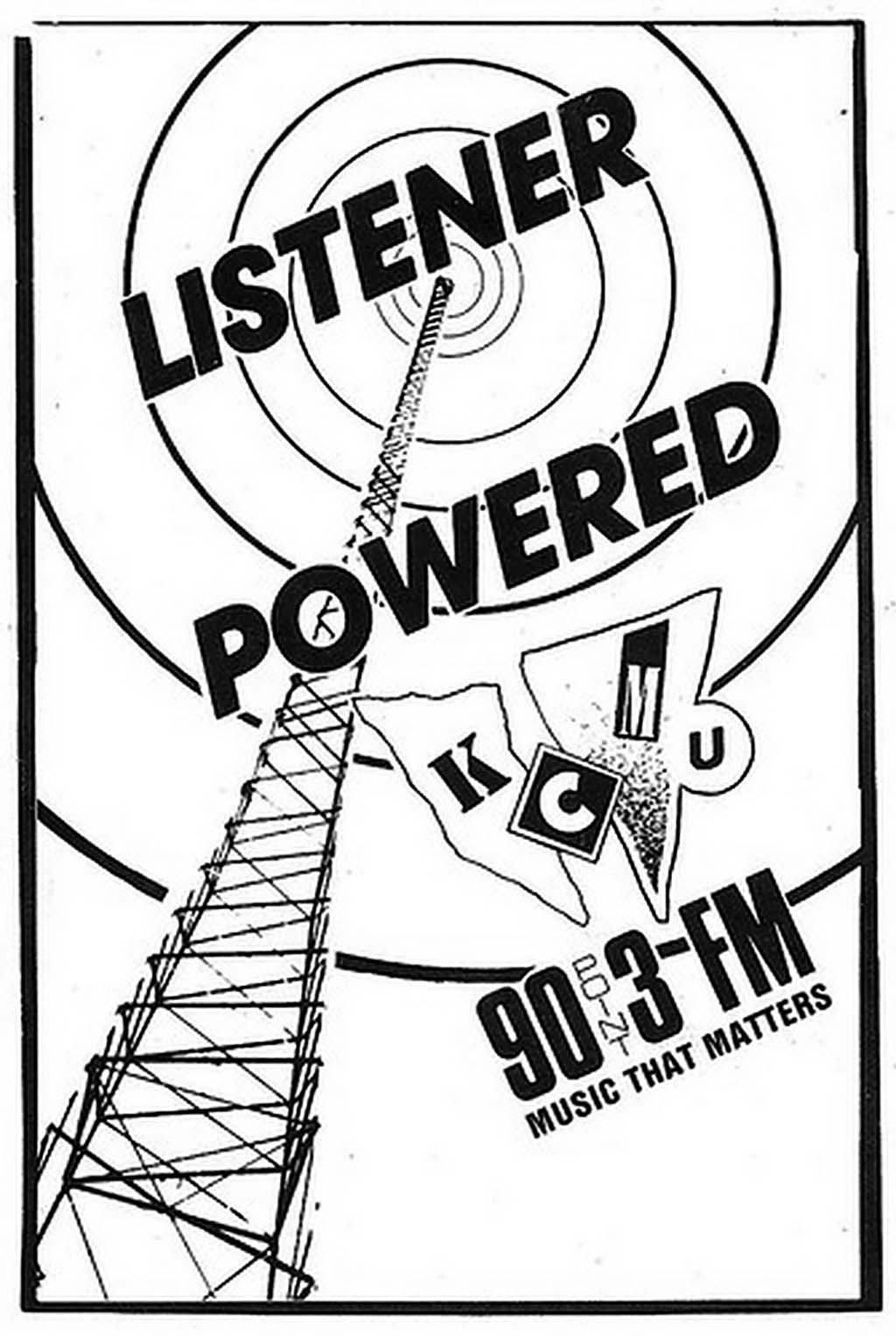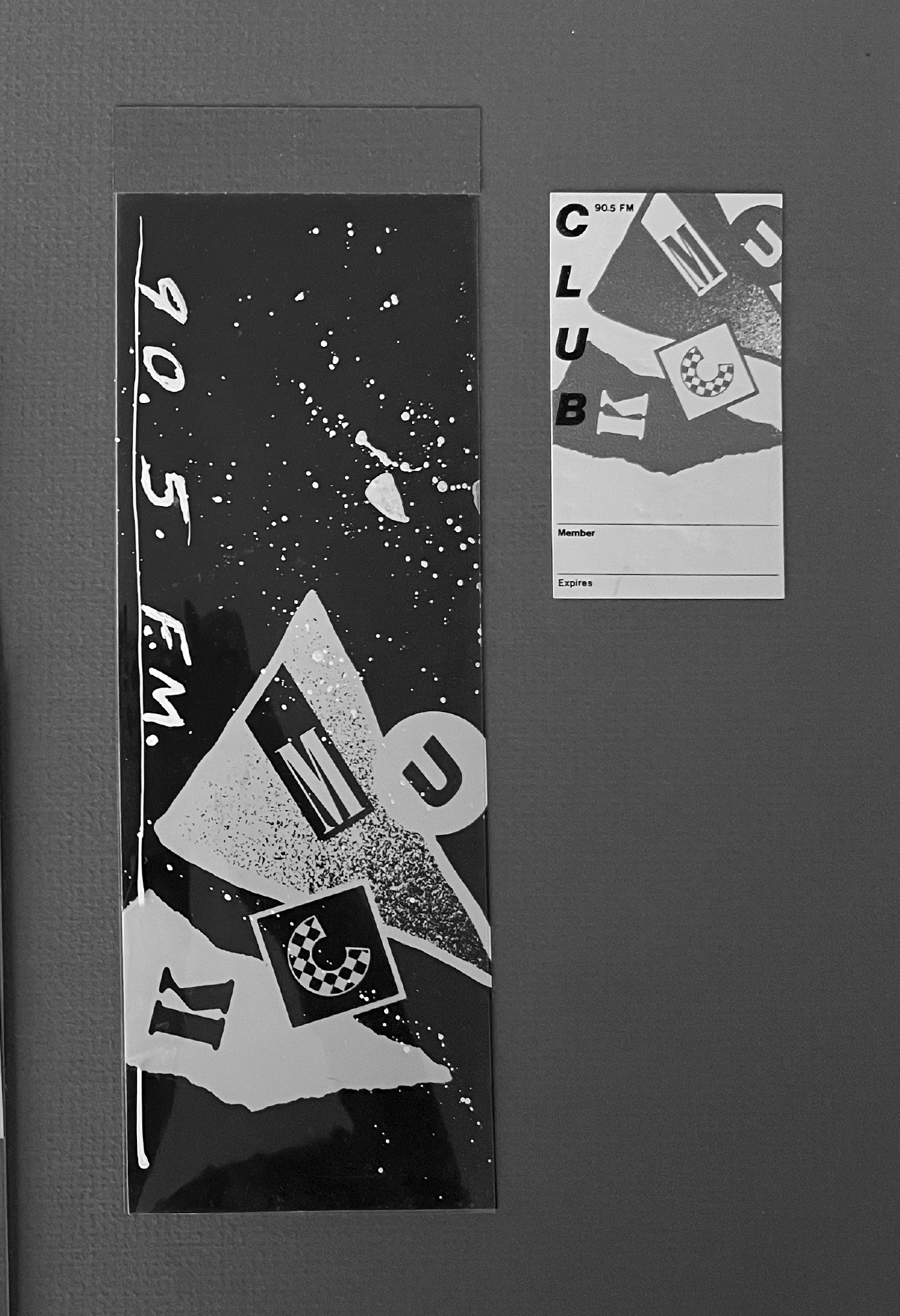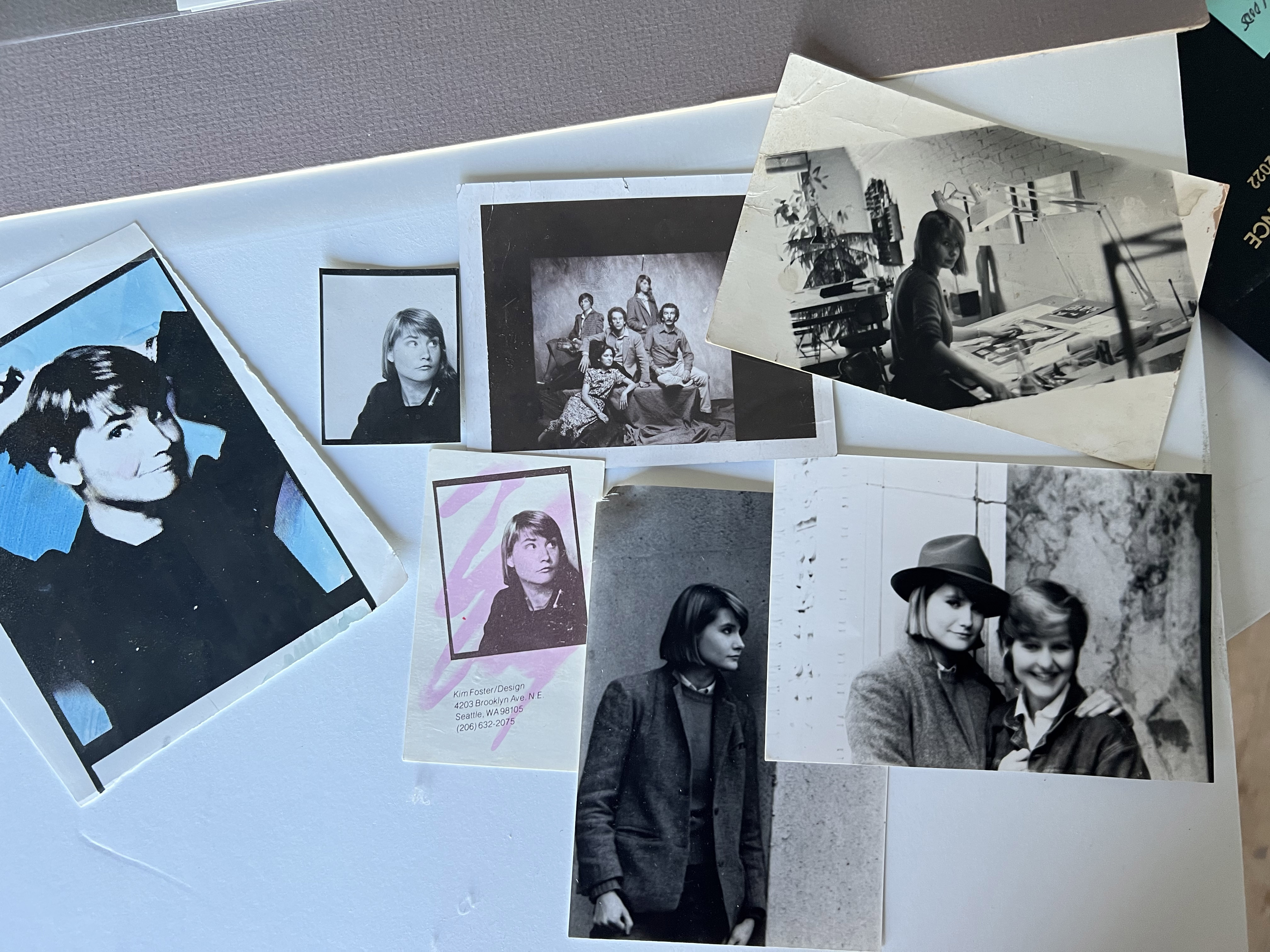
By Dashel Schueler and Rosalyn Claret
As we began work on a new t-shirt design for KEXP’s spring fundraising drive this year – our 50th anniversary – it didn’t take long to start talking about how fun it would be to feature a classic logo from our past. There have been quite a few over the years, but we quickly zeroed in on a logo that was used between 1983 and 1993, when we were known as KCMU.
The logo was created at a pivotal time for the station. The University of Washington was less able to support KCMU financially due to budget constraints, prompting the station to ask for community support for the first time. Simultaneously, the station shifted format. Beginning in 1982, KCMU began focusing much more airtime on music—specifically, music discovery and variety.

Our design process in 2022 kicked off with inspiration from an image that we believe was used in a newspaper advertisement. As we were putting all the graphics together with the help of our current design partners Saatchi & Saatchi, we started to wonder – what is the deal with that logo? So we set out to find the original creator. Starting with a former staff member who was around in those days, we followed a few leads, did a little internet stalking, and after a long chain of forwarded emails, tracked down Kim Robbins, now a senior art director for Nordstrom. (Robbins immediately wrote back: “Yes, I designed the SUPER 80s logo way back in the day.”)
A lifelong Seattleite, Robbins created the logo in 1983 while working as an intern at the Seattle design firm Wilkins & Peterson and Co. We spoke with her to learn more context about the logo, her inspirations, and her work in general.
Don’t forget, you can get the throwback t-shirt when you support KEXP’s Spring Fundraising Drive.
KEXP: What do you remember about the [logo] assignment, about what the need was at the time?
KIM ROBBINS: Basically, my sister hooked me up. My sister, Leslie Foster, was the assistant manager [at KCMU] and worked as a DJ for one of the reggae programs. So I met [station manager] Kerry Loewen in the University district. Kerry said he was looking to produce some sort of identity for KCMU. It wasn’t particularly a logo, per se. And he didn’t really give me any design parameters. He just basically asked me, would I be interested in doing it? And of course, I don’t think I was paid at the time; it was more like, you know, one of those freebie-y things. I said of course, yes, that sounds fantastic
And I don’t think I did a lot of explorations. I just kind of banged out a couple things. It was very 80s, very swashy swishes, you know, the block type, very April Greiman in terms of the graphics inspiration, who was a California designer. And I think they decided, “We’re just gonna run it.” They made stickers, and they used it on their fliers, and they made a limited sweatshirt for their fundraiser. And I remember I helped with facilitating the artwork for it, making sweatshirts with red and t-shirts with turquoise blue. Jesus, it was 80s.
I did talk to [Kerry] about doing a series of posters for him that were kind of based off of a guy named Art Chantry, who does posterized—you know, vintage photographs converted to black and white, posterized, collage-y kind of approaches. But I think they never really had funds or time they could count on enough to print it—so none of those things really manifested. And that was about the extent of it. I think they just kept reissuing it, and I think they had a couple other redesigns after mine, since mine was so dated!
I know we’ve been able to track down that it was used in some form through at least 1993.
I didn’t know it had that long a shelf life, that’s hysterical.
Well, and like you said, I’ve seen different iterations or interpretations of it over time. And different color schemes, too. Although yes, I loved the very 80s color choices you shared.
I was remembering how I used to go down to Tower Records in the U district for inspiration. I practically lived at Tower Records, and I would just wander around there looking at album covers, any off time I had. I had four bands at the time I was into. And they were Gang of Four, I thought you’d all remember them; The Clash, of course, classic; Madness, the ska band; and The The. And I kind of channeled all those into that logo. If you look for it, you’d probably see it. It was very much a hybrid, a mashup of all those classics of the time.

It was pretty unanimous when we looked at it, everyone was very drawn to it.
It’s so funny, what’s old is new to the young’uns. It’s funny. Nostalgia.
So I know you had your sister as a connection. What were your impressions of KCMU at the time? Were you a listener?
Oh yeah, yeah, absolutely, it was great. At the time my sister and I shared a room on Brooklyn Avenue in the U district. She was a student at UW, and I had been a student there, but I’d graduated and got a job. My sister was taking communications classes, and that’s how she started DJing. And I loved going [to KCMU]. I used to listen to her program. KCMU didn’t have the same kind of fundraising, it was more just a student radio program. But I loved it at the time, and the same thing happened then—the DJs did their own shows. Like, it was all completely random, right. There wasn’t any commercial aspect of it with advertising, or any of that stuff with all the other radio stations. So that was fantastic. But again, there wasn’t nearly the breadth of programming there is now. I think it was like, half a dozen shows. We all listened to it. It was our local station, really.
I understand there was news, there was sports [on KMCU]. But you were mainly thinking about KCMU as a music station at the time?
Oh yeah. Music was the center of what they were thinking of when they asked me to work on the logo. And it was kind of progressive at that point. They were positioning themselves as kind of edgy, right? It was the edge, the push of what they thought could be on the horizons, which I thought was exciting. Who would have thought it’d be what it is today?
Of course, now [KEXP] incorporates a much broader global point of view. And all the individual DJs, their individual zeitgeist. That’s a huge aspect of it. Not just what they play, but they, themselves.

Each person’s own sensibility, their experiences. I would like to think that’s something that has stuck around since the beginning, since those college radio days. So I wanted to ask you a little bit about what you’ve been up to since that time. It sounds like it was a relatively short period of time when you were working on projects of that sort.
Yes, I worked at the agency [Wilkins & Peterson] for a couple years, they were wonderful. It was so 80s. The first day, when they hired me—I’d won a “women in design” internship, and I could pick wherever I wanted to go, and I went there, and they later hired me. And the first thing they said was like, “Ok, you’re gonna work here, we gotta give you a nickname. These are your choices: Buffy, Missy, or Kiki.” And I’m like, um, I’ll take Kiki. So my name was Kiki Foster. That’s why, I thought, maybe that’s why you had a hard time finding me. I thought that was very 80s too.
Wow, you had an alter ego.
I had an alter ego. Most everyone at KCMU, everyone called me Kiki. They never called me Kim.
So then I went to Nordstrom thinking, “Oh, I’ll just pop in here for a few minutes, on my way to New York or whatever.” And then I never fuckin’ left. So you know, it’s been, how many, 30-plus years, and I’m still there. I came in as a graphic designer and primarily worked in print, because that was the thing of the day. And then I went into art direction because in retail you have to be able to do photo art direction. So a lot of magazine shoots, and fashion shoots, and catalog shoots. Now I’m technically a design principal but right now most of my work is in art direction. I’ve met the most wonderful people, photographers, art directors, stylists. So I continue to work with a great company, with great people. And great music fans.
Did you continue to listen to KCMU/KEXP over the years?
Oh yeah. I’ve got the app, I’ve got it on my phone. Are you joking? Of course, it’s fantastic.
Well, I have to say again, I know this all must have been incredibly random to hear from us. Thank you very much for spending the time just to talk it through. I love all the photos you sent. And definitely the design you created is helping support KEXP, and people are very excited about it. So think about it as an impact you’re having, and a legacy for the design.
A legacy. Second time around.
Who knows, maybe it’ll happen again 30, 40 years from now.
Everything comes back. If I’m still alive I’ll talk to you then!
Emily Fox catches up with Leroy Skeers who goes by the name Leroy Henry on air. He DJed at KCMU from 1972-1975.
KEXP’s Midday Show host looks back at the station’s early days as KCMU, getting demo tapes from Ben Gibbard, and one of the biggest Seattle band’s earliest days.